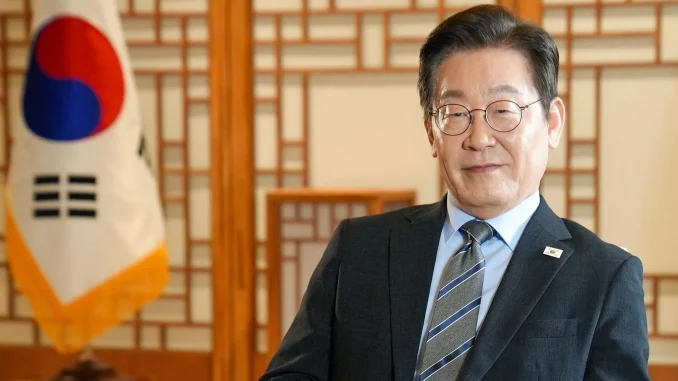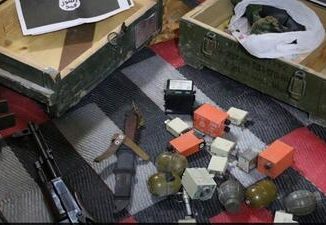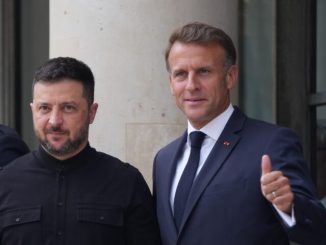
South Korea’s president has said he would accept a deal between Donald Trump and Kim Jong Un under which North Korea would agree to freeze production of its nuclear weapons for the time being, rather than getting rid of them.
Published September 22, 2025
South Korea’s Strategic Shift: Embracing a Trump-Kim Nuclear Freeze Proposal
SEOUL, South Korea — In a significant departure from traditional diplomatic approaches, South Korean President Lee Jae Myung has expressed openness to a proposal that would see North Korea freeze its nuclear weapons production. This stance aligns with former U.S. President Donald Trump’s willingness to engage in renewed dialogue with North Korean leader Kim Jong Un, potentially leading to a historic agreement.
A Pragmatic Approach to National Security
South Korea has historically pursued the ideal of complete denuclearization on the Korean Peninsula, but decades of negotiations with Pyongyang have yielded limited success. President Lee Jae Myung’s support for a Trump-Kim nuclear freeze reflects a shift toward realism over idealism. By focusing on achievable steps—such as halting the expansion of North Korea’s nuclear arsenal—South Korea can mitigate immediate threats without waiting for an all-or-nothing outcome.
The rationale behind this pragmatic approach is clear: North Korea reportedly adds 15 to 20 nuclear warheads annually, rapidly enhancing its strike capabilities. Attempting to achieve complete denuclearization under current circumstances is both unrealistic and potentially destabilizing, as aggressive pressure could provoke military escalation. By contrast, a freeze would cap North Korea’s nuclear growth, giving South Korea and its allies valuable time to strengthen defensive measures and explore incremental diplomatic solutions.
Furthermore, this approach aligns with a risk-management strategy common in security-focused policymaking. Instead of pursuing lofty, long-term objectives that may never materialize, South Korea can prioritize measures that offer immediate protection for its citizens, maintain regional balance, and create conditions for gradual engagement with Pyongyang. It also signals to North Korea that dialogue, rather than confrontation, is the pathway to international legitimacy and potential economic incentives.
In essence, President Lee’s pragmatic stance underscores a security-first mindset—one that values practical, achievable results over aspirational but unattainable goals. By endorsing a nuclear freeze, South Korea is taking a measured, responsible step toward reducing regional tension while keeping the ultimate goal of denuclearization on the table.
Leveraging Personal Diplomacy
A central element of South Korea’s evolving strategy is the recognition of personal diplomacy as a tool for conflict resolution. President Lee Jae Myung’s openness to a Trump-Kim nuclear freeze hinges on the unique relationship that former U.S. President Donald Trump has cultivated with North Korean leader Kim Jong Un. Unlike traditional multilateral negotiations, which often involve layers of bureaucracy, sanctions, and formal agreements, direct personal engagement can open channels that would otherwise remain closed.
Trump’s previous summits with Kim demonstrated that face-to-face dialogue and personal rapport can create opportunities for concrete agreements, even in the absence of comprehensive diplomatic frameworks. President Lee appears to view this as a strategic lever: by supporting dialogue between Trump and Kim, South Korea can influence the process indirectly, encouraging North Korea to consider measured steps such as freezing its nuclear program.
Moreover, leveraging personal diplomacy signals a flexible and innovative approach to international relations. It acknowledges that conventional strategies—such as sanctions and UN-led negotiations—have limitations and that pragmatic alternatives may yield faster, more effective results. For South Korea, this approach is not just about engaging North Korea; it also demonstrates alignment with U.S. leadership, reinforcing the alliance and ensuring that Seoul remains a key player in shaping regional security outcomes.
Importantly, personal diplomacy can reduce misperceptions and miscalculations. Direct communication between leaders diminishes the likelihood of misunderstandings that could escalate into military conflict. By endorsing a Trump-Kim dialogue, President Lee is emphasizing trust, transparency, and personal accountability as instruments for de-escalation, signaling to both domestic and international audiences that South Korea is actively seeking stable, predictable avenues for peace.

President Lee Jae-myung and U.S. President Donald Trump hold a South Korea-U.S. summit at the White House in Washington, D.C., U.S., on August 25, 2025, local time. /Newsis
 Implications
Implications
1. Pragmatic Security over Idealistic Goals
-
Right-leaning commentators would likely highlight that freezing North Korea’s nuclear program—even without full denuclearization—is better than nothing.
-
President Lee’s approach is framed as practical and realistic, prioritizing immediate security benefits for South Korea rather than chasing long-term, elusive goals.
-
This aligns with right-leaning priorities: defense readiness and risk management rather than idealistic multilateral agreements.
2. Trust-Based Diplomacy
-
The emphasis on leveraging Trump’s personal rapport with Kim Jong Un resonates with right-leaning thought, which often values strong leadership and direct negotiation over bureaucratic multilateral processes.
-
Right-leaning observers might argue that strong leaders can extract concessions through personal leverage, rather than relying on UN resolutions or international consensus.
3. U.S.-South Korea Alliance Strength
-
Support for engaging Trump underscores the importance of U.S. leadership in Asia, a common right-leaning stance.
-
A deal that involves the U.S. as a central player reinforces deterrence and signals that the U.S. is committed to South Korea’s security—appealing to those skeptical of UN or regional multilateral approaches.
4. Realpolitik over Ideology
-
Accepting a freeze instead of full denuclearization is realpolitik—the idea that compromise and pragmatic deals can maintain peace.
-
Right-leaning readers might view this as acknowledging the limits of idealism, focusing on stability, defense, and deterrence, rather than moralistic goals like total denuclearization.
5. Domestic Political Messaging
-
A right-leaning interpretation could frame President Lee’s stance as strong on national defense, appealing to voters concerned with North Korea’s nuclear threat.
-
Positioning South Korea as open to practical, U.S.-backed deals conveys toughness and pragmatism, qualities often valued in right-leaning political rhetoric.
 Overall Takeaway:
Overall Takeaway:
President Lee Jae Myung’s openness to a Trump-Kim deal reflects a pragmatic approach to national security, prioritizing immediate containment of North Korea’s nuclear threat over idealistic, long-term denuclearization goals. By leveraging personal diplomacy and U.S.-South Korea cooperation, this strategy underscores a realistic, security-first mindset that aligns with right-leaning priorities: strong defense, effective deterrence, and stability in the region. It signals that South Korea is willing to pursue practical, achievable solutions to safeguard its national interests, even if it requires compromise, rather than waiting for perfect outcomes.
SOURCES: CHOSUN – President Lee Proposes Temporary North Korea Nuclear Freeze
TELEGRAFI – South Korea would accept a Trump-Kim deal to freeze nuclear program, says President Lee Jae-Myung
UNIINDIA – South Korea to accept Trump-Kim deal to freeze nyclear programme, president





Be the first to comment